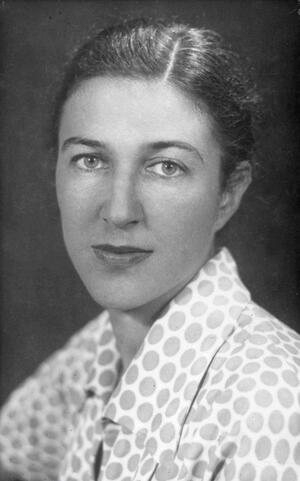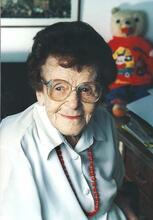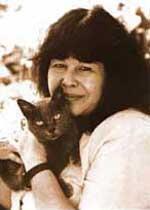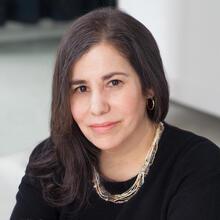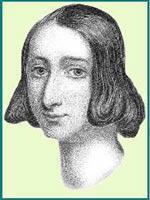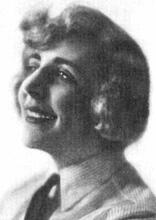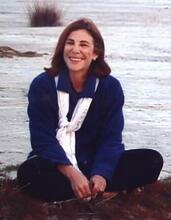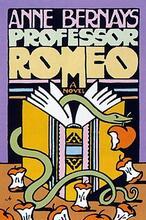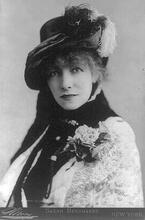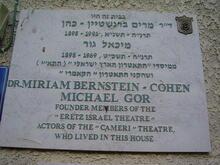Nancy Florence Keesing
Born and based in Sydney, Australia, Nancy Keesing engaged in literary pursuits from an early age, writing poetry and ensuring the preservation of nineteenth-century Australian songs and rhymes. She became an influential figure on the Australian literary scene, not only as an author, editor, and critic, but also as an advocate and administrator. She was instrumental in the establishment of Australia’s top literary award and initiated other developments of immense benefit to writers.
Prominent Australian literary figure Nancy Keesing was one of the comparatively few female Australians before the 21st century to achieve national status as a public intellectual. A prolific author (of both poetry and prose, occasionally for children), she was also an editor, anthologist, and reviewer. Keesing played an important role in bringing the works of many deserving post-war Australian creative writers to the attention of the reading public and ensured the preservation of nineteenth-century Australian songs and rhymes. She strove for and welcomed the relaxation of censorship and the introduction of the lending rights scheme benefiting living authors whose books are borrowed from public libraries and was instrumental in the establishment of the Miles Franklin Literary Award, Australia's most prestigious literature prize, which is named after a famous female author.
Early Life
Born in Sydney on September 7, 1923, the elder of two daughters of prosperous parents from New Zealand, Gordon and Margery (Hart) Keesing, Nancy was educated at Sydney Church of England Girls' Grammar School and at Frensham, a girls’ boarding school in Mittagong, New South Wales. It was not uncommon for Jewish children whose parents could afford the fees to attend single-sex denominational private schools, which were perceived as giving an excellent education and affirming the children’s status as members of the Australian middle class. (Jewish day schools were not established until after World War II.) Keesing’s father, an architect, was prominently active in Jewish communal life. Both he and her mother imbued her from an early age with a love of books and reading, particularly in the realms of contemporary poetry and fiction. A writer since childhood, she would pay a fond tribute to her elderly mother in the poem “Three Ring Circus,” published in The Penguin Book of Australian Women Poets (1986).
After leaving school Keesing briefly studied art at the East Sydney Technical College. Following service during the Second World War as a clerk in the Department of the Navy—recalled in her book Garden Island People (1975)—she obtained a diploma in social work from the University of Sydney and worked for several years in a busy children’s hospital. She had already begun to make a name for herself as a poet, with such verse as “Imminent Summer” (included in an anthology of then recent Australian poetry published during 1946) and “Manifesto” (a highly commended submission to the Sydney Morning Herald verse competition in 1949). Some of her verse had appeared in The Bulletin, a long-established Sydney periodical of politics, current affairs, literature, and humor, and by the 1950s she had become professionally close to its literary editor, Douglas Stewart.
Married, at Sydney's Great Synagogue in 1955, to Dr. Adolphus Marcus (Mark) Hertzberg, a chemical engineer with whom she had two children, Keesing retained her Dutch Jewish surname for professional purposes throughout her life. She was a full-time staff member at The Bulletin from 1952 until 1956, when her first child was born. With Stewart she co-edited Australian Bush Ballads (1955) and Old Bush Songs and Rhymes of Colonial Times (1957), significant contributions to the reassessment and rehabilitation of iconic, sui generis, Australian verse. “The Australian ballad is a valuable part of our history, but not representing our greatest verse,” she explained in 1953. “We can see that, now that we are far enough away. But at the time of their writing, chiefly in the ‘90s, ballads were given a false value. This was followed by a revulsion, and a campaign against them ... which brought about the suppression of many of real interest” (Quoted in The Worker, Brisbane, October 19, 1953). She thus played a pioneering part in plucking old Australian country folksongs out of the oblivion into which they were starting to fall. Identifying the works in question entailed numerous hours on her part trawling through old newspapers and other sources in archives public and private, typing them out, and then, with Stewart, making a final selection.
A Force in the Australian Literary World
Keesing’s work with Stewart facilitated her entrance into Sydney's influential literary circles, in which she was a leading figure for the rest of her life. From 1969 she was on the management committee of the Australian Society of Authors (ASA), set up in 1963 to advance and safeguard the rights of published writers and illustrators. She edited Transitions, an anthology of members’ writings, published in 1970, and from 1971 to 1974 edited the Society's journal, Australian Author. She also served on the committee of the Sydney branch of the London-based English Association, formed to promote the status of English as an appropriate field of study at secondary school and university level, and contributed reviews of poetry and prose, including non-fiction, to Southerly, the branch's literary journal. She also wrote reviews for such major outlets as the Australian Book Review, the Sydney Morning Herald, and the Melbourne Age, and radio scripts for the taxpayer-funded national broadcaster, the ABC. In 1973 she was among the eleven writers and academics appointed members of the new Literature Board that the government of prime minister Gough Whitlam added to the Australian Council for the Arts (now the Australia Council). She chaired that board from 1974 to 1977, edited the ground-breaking Australian Postwar Novelists: Selected Critical Essays (1975), and in 1979 was honored with membership of the Order of Australia (AM) for her services to Australian literature.
Later Career
A member of the Sydney branch of the Australian Jewish Historical Society, founded in 1939, Keesing edited Shalom (1978), an anthology of Australian Jewish short stories, and financed the invaluable Bibliography of Australian Judaica compiled by Dr. Serge Liberman and edited by Joy Ruth Young. She and Judy Cassab were among 33 prominent, mainly non-Jewish, Australians (four of them women) from various fields who signed a letter to the Canberra Times (April 11, 1979) deploring the “blatant politicisation” of UNESCO and its consequent demonization of Israel and calling on other concerned Australians to follow their example in communicating concerns about UNESCO’s anti-Israel animus to that organization’s director-general in Paris.
Keesing’s co-authored Lily on the Dustbin: slang of Australian women and families (1982) was a notable contribution to social and women’s history. In 1985 she endowed, under the aegis of the Literature Board and in memory of her parents, a writers’ fellowship enabling its recipients to spend six months as writer-in-residence at the so-called Keesing Studio in Paris's Marais district, held under a 75-year lease from La Cité Internationale des Arts. Her memoir, Riding the Elephant, its title prompted by a childhood incident at a circus, was published in 1988.
Keesing died of breast cancer on January 19, 1993. In 1984, with a generous donation, she had been instrumental in establishing the ASA’s Writers’ Benevolent Fund, and after her death a bequest to the ASA enabled the establishment of the Keesing Press. Her widower Mark, who had always supported her, instituted an annual fellowship in her name to boost research into any aspect of Australian life and culture using the resources of the State Library of New South Wales; its initial recipient was Douglas Stewart’s daughter Meg, who went on to edit a collection of Nancy’s poems, The Woman I Am, published in 1995.
Hellyer, Jill. “Nancy Keesing 1923–1993.” Australian Author, vol. 25, no. 1 (Autumn 1993): 30
Keesing, Nancy. Riding the Elephant. Sydney: Allen and Unwin, 1988.
Liberman, Serge, comp. The Bibliography of Australasian Judaica 1788–2008. Melbourne: Hybrid Publishers, 2011.
Stewart, Meg. “Remembering Nancy Keesing.” The Sydney Papers, vol.7, no. 3 (Winter 1995): 18–29.
Webby, Elizabeth. “Keesing, Nancy Florence.” Australian Dictionary of Biography, 2017 (http://adb.anu.edu.au/biography/keesing-nancy-florence-17853; accessed September 3, 2019).

